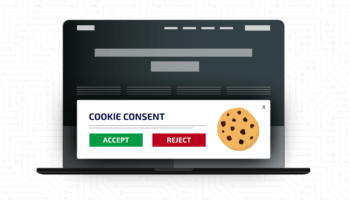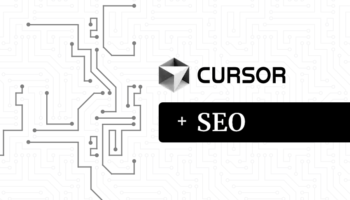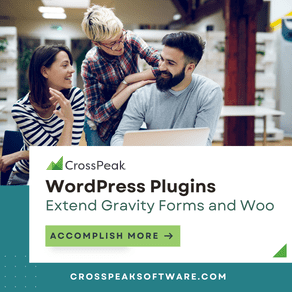In the world of SEO, user experience is no longer a fringe factor; it’s a central component of Google’s ranking algorithm. At the heart of this shift are Core Web Vitals, a set of specific metrics that measure a website’s real-world user experience. A strong score can give you a competitive advantage, while a poor one can hurt your search rankings and lead to high bounce rates. This guide will take a deep dive into the Core Web Vitals and provide actionable steps to improve your site’s performance.
What Are Core Web Vitals?
Core Web Vitals are a set of metrics designed by Google to measure loading speed, interactivity, and visual stability. They are part of the larger “page experience” ranking signal. The three metrics are:
- Largest Contentful Paint (LCP): Measures loading performance.
- Interaction to Next Paint (INP): Measures interactivity. (Note: INP replaced First Input Delay (FID) as a Core Web Vital in March 2024.)
- Cumulative Layout Shift (CLS): Measures visual stability.
To achieve a “Good” rating, a website needs at least 75% of its page loads to meet the “Good” thresholds for all three metrics. The Chrome User Experience Report (CrUX) collects this data from real users.
Largest Contentful Paint (LCP)
LCP measures how long it takes for the most significant content element on a page to become visible to the user. This is often the main hero image, a video thumbnail, or a large text block.
Why it Matters for SEO
A slow LCP can create a negative first impression, causing users to bounce before seeing your content. Google uses LCP as a direct ranking signal, and a fast-loading page is more likely to rank higher, especially when competing with pages of similar content quality.
How to Improve LCP
- Optimize Images: Compress images and use modern formats like WebP. Make sure images are appropriately sized for their display on your website.
- Improve Server Response Time: A faster server (measured by Time to First Byte, or TTFB) means content can start loading sooner. Consider upgrading your hosting or using a Content Delivery Network (CDN).
- Remove Render-Blocking Resources: Minimize or defer JavaScript and CSS that are not critical for the initial page load.
Interaction to Next Paint (INP)
INP measures a page’s responsiveness to user interactions, such as clicks or taps. It tracks the time from when a user interacts with a page to when the browser paints the next frame, providing visual feedback. INP replaced the previous metric, First Input Delay (FID), which only measured the delay of the very first user interaction.
Why it Matters for SEO
A high INP score indicates that a page is slow to respond to user input, leading to a frustrating experience. A responsive and interactive page keeps users engaged, leading to lower bounce rates and a more positive user experience signal for Google.
How to Improve INP
- Minimize JavaScript Execution: Long-running JavaScript tasks can block the browser’s main thread, preventing it from responding to user interactions. Break up long tasks into smaller, asynchronous chunks.
- Use Web Workers: Offload heavy JavaScript tasks to a background thread to keep the main thread free to handle user interactions.
- Reduce Third-Party Scripts: Audit and reduce the number of third-party scripts (e.g., ads, analytics) that can slow down your site’s responsiveness.
Cumulative Layout Shift (CLS)
CLS measures a page’s visual stability. A high CLS score occurs when elements on a page move unexpectedly after the page has started to load. This can be incredibly frustrating for users, causing them to accidentally click on the wrong thing.
Why it Matters for SEO
Google’s algorithm prioritizes a stable and predictable user experience. A low CLS score indicates a reliable and trustworthy website, a positive signal for search rankings. It directly impacts user satisfaction and engagement.
How to Improve CLS
- Set Dimensions for Images and Videos: Always include
widthandheightattributes in your image and video tags so the browser can reserve the correct amount of space before the media loads. - Avoid Inserting Content Above Existing Content: Don’t inject dynamic content (like ads, pop-ups, or banners) at the top of a page unless it’s in response to a user action.
- Optimize Fonts: Use font preloading and
font-display: optionalto prevent text from shifting as a custom font loads.
Tools for Measurement and Improvement
You can’t improve what you don’t measure. Google provides several free tools to help you analyze your Core Web Vitals:
- PageSpeed Insights: Provides both real-user (field) data from CrUX and lab data from Lighthouse. It also gives actionable recommendations.
- Google Search Console: The Core Web Vitals report in GSC shows you which pages on your site are performing well and which ones need improvement.
- Lighthouse: A built-in tool in Chrome DevTools that provides a comprehensive performance audit and suggestions for improvement.
- Web Vitals Chrome Extension: A simple browser extension that gives you real-time Core Web Vitals scores for the page you’re visiting.
By using these tools to identify and fix issues, you can significantly improve your website’s performance, enhance the user experience, and ultimately, boost your SEO rankings.





